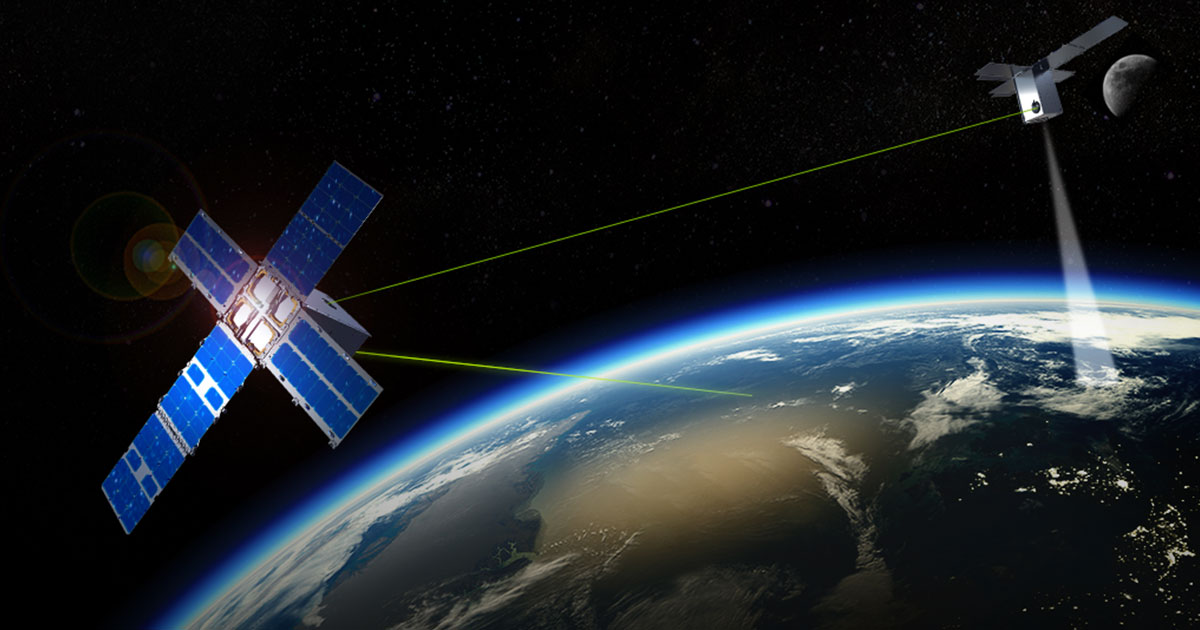SDA and General Atomics have been unable to communicate with the LINCS satellites launched June 30
WASHINGTON — After a setback in a laser communications experiment launched last June, the Space Development Agency and satellite manufacturer General Atomics are considering next steps.
General Atomics Electromagnetic Systems on June 30 launched an experiment for SDA known as Laser Interconnect and Networking Communications System (LINCS) to demonstrate optical communications in space.
Two cubesats carrying optical communications terminals and infrared payloads flew to orbit on the SpaceX Transporter-2 rideshare mission. But SDA and General Atomics have been unable to establish contact with the satellites.
SDA said in a statement Feb. 4 that there were “challenges communicating with the LINCS sats. However, SDA is still working in partnership with the performer General Atomics on the way ahead.”
General Atomics initially reported in a June 30 news release that the LINCS satellites “successfully deployed into orbit and have begun satellite commissioning and operations.” But SDA Director Derek Tournear in August revealed that the satellites were tumbling, or no longer in their intended position.
SDA did not explain the cause of the malfunction. Gregg Burgess, vice president of space systems at General Atomics, said a problem occurred at launch. “Unfortunately, there was an issue with the launch vehicle,” Burgess said on a Mitchell Institute for Aerospace Studies podcast that aired Feb. 5.
SpaceX did not respond to a request for comment on the LINCS deployment.
Burgess said the company is moving forward and building a “next generation set of laser communication terminals that we hope to be launching in the 2023 timeframe.”
The LINCS experiment was internally funded by General Atomics. Burgess said the company plans to have two new optical terminals completed by the end of the year. “In the next six to 12 months, we’re going to be having systems in space demonstrating this capability in low Earth orbit.”
SDA said it is weighing options, including launching other experiments. “As with any other high-risk experiment, SDA has other potential options we can exercise if we are unable to achieve the minimum viable product needed. Like any other disruptive enterprise, we are not afraid to iterate to the next solution.”
The LINCS experiment was intended to demonstrate in-space communication and also attempt space-to-air laser links between a satellite and an optical terminal on an MQ-9 Reaper unmanned aerial vehicle, made by General Atomics.
Burgess said optical communications is a major business focus for the company. General Atomics is expanding production facilities in California and Mississippi, he said. The goal is to ramp up manufacturing of small laser terminals for proliferated LEO constellations.
Tournear said SDA plans to work with multiple laser communications vendors as it moves to deploy a large constellation of data-relay satellites in LEO.
Optical inter-satellite links are a growing market as they enable high data transfer rates and consume less power compared to radio-frequency communications satellites. For the military, one key benefit is that laser beams are difficult to detect so communications are more secure, and data links between satellites and unmanned drones would be very hard to intercept.
